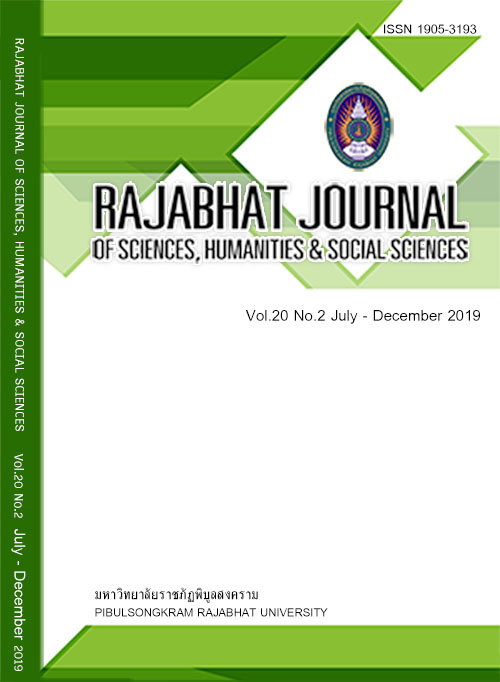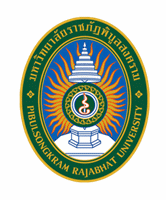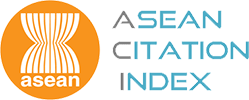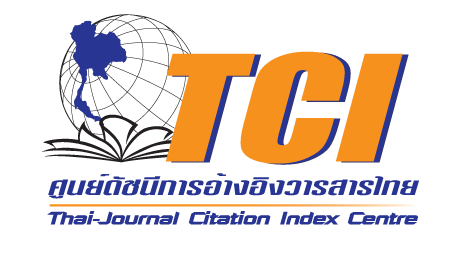ปัจจัยที่มีอิทธิพลต่อการตัดสินใจใช้ธาตุอาหารพืชรูปแบบใหม่ของเกษตรกรผู้ปลูกข้าวเขตอำเภอนครหลวง จังหวัดพระนครศรีอยุธยา
คำสำคัญ:
ผลิตภัณฑ์ธาตุอาหารพืช, การแพร่กระจายนวัตกรรม, ความอุดมสมบูรณ์ของดิน, การตัดสินใจเลือกใช้นวัตกรรม, ระบบนิเวศทางสังคมบทคัดย่อ
วัตถุประสงค์ของงานศึกษาวิจัยนี้ เพื่อหาปัจจัยจากตัวแปรภายนอกที่มีอิทธิพลต่อพฤติกรรมในการตัดสินใจเลือกใช้ธาตุอาหารพืชของชาวนา เช่น ก) ระดับองค์ความรู้ ข) ด้านระบบนิเวศทางสังคม และ ค) ผู้นำทางความคิด โดยเสนอกรอบแนวคิดในการศึกษาวิจัยเพื่อมุ่งหาองค์ประกอบ กระบวนการ รวมถึงการปฏิสัมพันธ์ภายในตัวแปรโครงสร้างของแต่ละปัจจัย ที่อาศัยพื้นฐานจากงานวิจัยต่าง ๆ ในด้านการแพร่กระจายแนวทางปฏิบัติตามการเกษตรทฤษฎีใหม่ การศึกษาด้านระบบนิเวศทางสังคม ร่วมกับทฤษฎีการแพร่กระจายนวัตกรรม การเลือกกลุ่มตัวแทนที่ตอบแบบสอบถามและวิเคราะห์ ใช้หลักงานวิจัยแบบผสมผสานร่วมกับการวิเคราะห์ทางสถิติเชิงปริมาณ เพื่อลดผลจากปัจจัยภายนอกอื่น ๆ เช่น อุปสรรคทางการค้า ชลประทาน และประเด็นด้านสิ่งแวดล้อม ผลจากการวิเคราะห์พบว่าปัจจัยที่มีผลเชิงบวกต่อพฤติกรรมในการตัดสินใจเลือกใช้ธาตุอาหารพืชของชาวนา สามารถเรียงลำดับจากมากไปน้อยได้ดังนี้ 1) ระดับองค์ความรู้ 2) ผู้นำทางความคิด และ 3) ด้านระบบนิเวศทางสังคม โดยชาวนาจะเลือกปฏิบัติตามการทำเกษตรทฤษฎีใหม่ถ้าได้เห็นจริงว่าสามารถเพิ่มผลผลิตได้มากกว่าปัจจัยด้านอื่น ๆ เช่น การสนับสนุน สินเชื่อ นอกจากนี้การวิเคราะห์ทางสถิติยังชี้ให้เห็นว่ากรอบแนวคิดในงานศึกษาวิจัยสามารถอธิบายความเชื่อมโยงในตัวแปรที่สำคัญต่าง ๆ ได้อย่างมีนัยสำคัญ
เอกสารอ้างอิง
Brown JD. What is Construct Vallidity. (University of Hawai'i at Manoa). Hawai'i: JALT Testing & Evaluation SIG Newsletter, 2000; 4(2); 8-12.
Bwambale N. Farmers’ Knowledge, Perceptions, and Socioeconomic Factors Influencing Decision Making For Integrated Soil Fertility Management Practices in Masaka and Rakai Districts, Central Uganda. Master Degree Thesis. Iowa, USA: Iowa State University; 2015.
Chen JH. The Combine Use of Chemical and Organic Fertilizers and/or Biofertilizer for Crop Growth and Soil Fertility. International Workshop on Sustained Management of the Soil-Rhizosphere System for Efficient Crop Production and Fertilizer Use, 2006; 1-11.
FAO. Plant Nutrition for Food Security: A Guide for Integrated Nutrient Managment. Rome: FAO; 2006.
FAO/Fertilizer Organizations Working Group, F. World fertilizer trends and outlook to 2018. Rome: Food And Agriculture Organization of the United Nations; 2015.
Feder G, Just RE, Zilberman D. Adoption of Agricultural Innovations in Developing Countries: A Survey. Economic Development and Cultural Chnage, 1985; 1-77.
Hair JF, Black WC, Babin BJ. et al. Multivariate Data Analysis International. 7th ed. Harlow , Essex, England: Pearson Education Limited; 2014.
Hogg D. Application of Groupthink to Generation Y Decision Making Process within a Professional Services Context in New Zealand. International Journal of Business and Management, 2013; 8(8): 69-78.
Holmes H, Tangtongtavy S, Tomizawa R. Working with the Thais, A Guide to Managing in Thais. 2nd ed. Bangkok, Thailand: White Lotus Co., Ltd.; 2003.
Income M. Fundamental Agricultural Information of Ayutthaya. Ayutthaya: Ayutthaya Agricultural Office; 2015.
Isvilanonta S. Thailand Agriculture: The Country s profiles and Current Status. Knowledge Network Institute of Thailand (KNIT). Bangkok: Agri benchmark Cash Crop Conference 2010; 2010.
Krejcie RV. Morgan DW. Determining Sample Size for REsearch Activities. Educational and Psychrological Measurement, 1970; 30: 607-610.
Kumpa L. Sustainable Agriculture and Food Security in Thailand: National Government Perspectives & Policies. National Economic and Social Development Board (NESDB). Bangkok: Presented at Higher Education for Sustainable Agriculture and Food Security in Thailand and Southeast Asia, School of Agriculture Resources (CUSAR); 2015.
Lloyd R. An Analysis of Fertilizer Markets in BRIC Countries. Philipines: Administrative Issues Journal; 2010.
Map, Ayutthaya Farmer. DOAE Ayutthaya Farmer Map. Agricultural Support Office, Information Technology and Communication. Ayutthaya: Ayuthaya Statistic Website; 2016.
Mtebe JS. Raisamo R. Investigating students’ behavioural intention to adopt and use mobile learning in higher education in East Africa. International Journal of Education and Development using Information and Communication Technology (IJEDICT), 2014; 10(3): 4-20.
NECTEC NM. 2018. https://agri-map-online.moac.go.th/login. Retrieved from Agri-Map: https://agri-map-nline.moac.go.th/loginPaopongsakorn N. Aroonkong D. Fertilizer Policy in Thailand. TDRI, At Apsara Angkor Resort & Conference Center. Siem Reap: TDRI; 2013.
Poapongsakorn N. Transformation of the Thai agriculture in the last three decades. Thailand Development Research Institute, Project of Leibniz University Hannover. Bangkok: A regional conference organized by RESAKSS-Asia; 2017.
Reimer AP, Weinkauf DK, Prokopy LS. The influence of perceptions of practice characteristics: An examination of agricultural best management practice adoption in two Indiana watersheds. Journal of Rural Studies, 2012; 2: 118-128.
Rogers EM. Diffusion of Innovation 3ed. Newyork, N.Y., USA: The Free Press A Division of Macmillan Publishing Co., Ltd.; 1983.
Supaporn P, Kobayashi T, Supawadee C. Factors Affecting Farmers' Decisions on Utilization of Rice Straw Compost in Northeasern Thailand. Journal of Agriculture and Rural Development in the Tropics and Suntropics, 2013; 114(1): 21-27.
Sutjaritturakarn W, Tanapanyaratchawong J. Factors Influencing the Adoption of Production Techniques abd Applications of Organic Fertilizer for Farmers in Hatyai District, Songkhla Province. Suranaree Journal of Science and Technology, 2010; 4(1): 29-44.
Tansri K. Labor and Agriculture Changing in Thailand. BOT, Bank of Thailand. North Easthern: BOT; 2012.
World Bank_International Trade Department, T. W. Clusters for Comppetitiveness: A Practical Quide & Policy Implications for Developing Cluster Initiatives. Washington: Prem The World Bank; 2009.
ดาวน์โหลด
เผยแพร่แล้ว
รูปแบบการอ้างอิง
ฉบับ
ประเภทบทความ
สัญญาอนุญาต
Each article is copyrighted © by its author(s) and is published under license from the author(s).










